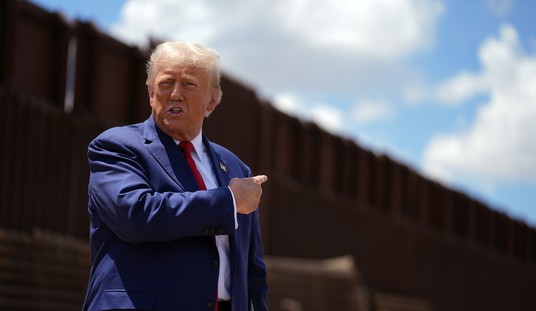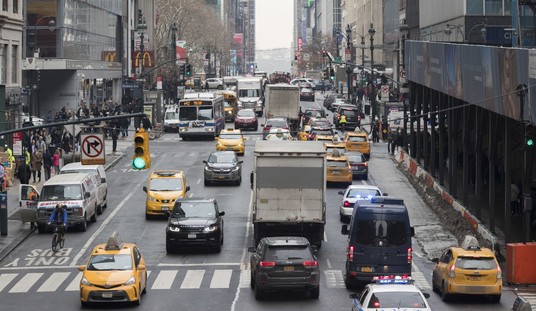Finally — but perhaps too late? It took the second shortage of cash in this crisis for Treasury to finally put limits on its small-business lending program. The second tranche of the Paycheck Protection Program got capped at $2 million per loan after a series of larger publicly held corporations drained the fund in the first tranche, but it wasn’t the only emergency loan program Treasury operates. The Small Business Administration finally put a $150,000 cap on its bridge-loan program, but not before it got overwhelmed by applications:
The Economic Injury Disaster Loan program is a long-standing Small Business Administration program that’s separate from the new Paycheck Protection Program, which has challenges of its own.
Congress gave the disaster loan program more than $50 billion in new funding in recent relief bills to offer quick-turnaround loans to businesses slammed by the coronavirus pandemic. But by many accounts, it is failing spectacularly. After initially telling businesses that individual disaster loans could be as high as $2 million, SBA has now imposed a $150,000 limit without publicly announcing the change, said people familiar with the situation who were not authorized to speak publicly.
Additionally, the agency has faced a backlog of millions of applications for the disaster loan program for the past several weeks, several SBA officials have said.
The SBA has been so overwhelmed by demand that it is now allowing only agricultural interests to submit applications as it works through an enormous backlog. Key Republican senators had been pushing hard for farmers and agriculture companies to be able to tap the program, and they are now being prioritized over other prospective borrowers.
We’ll get back to EIDL in a moment, but let’s capture the context for the new caps first. The Paycheck Protection Program had much higher caps at first, up to $10 million, but few if any restrictions on qualifying as a necessity. The intent from Congress was to protect small businesses with few or no cash reserves. A large part of the first tranche instead went to publicly traded companies with more than sufficient cash reserves, in effect starving other businesses from the critical capital infusion to keep their doors open:
Forty-one publicly traded companies that got the emergency aid already had enough to cover basic expenses for two months or more when they applied for the funds, a Reuters analysis found — even if their revenue dropped to zero. Thirty had three months or more of cash. Six had enough to last at least until December, according to the review, which was based on average monthly operating expenses from 2019.
All told, these relatively flush 41 companies were able to secure $104 million in government aid, at a time when legions of smaller companies with little in their coffers were being turned down. Seventeen of the 41 recipients had market capitalizations of at least $100 million.
“It’s disheartening to see relief spending go to companies that don’t appear to desperately need a lifeline,” said Danielle Brian, executive director of the Project On Government Oversight, a Washington-based non-profit that monitors government spending. “This shows just how urgently we need more oversight of this program and the rest of the federal government’s relief spending.”
That may be a knock on the PPP and its private-public partnership, but the SBA direct-management model on EIDL hasn’t fared any better. That creates a bottleneck for review and approval of the loans which cannot easily be solved by private-sector flexibility. SBA has already spent $8 billion of the $50 billion-plus that it received from Congress for this program, amounting to 16% of the funds, but it has only processed less than one percent of the applications. At this rate, it might take months or even more than a year to get to the end of the backlog, by which point most businesses either won’t need it — or won’t be around to receive it.
Resetting the loan cap might convince many of these applicants to withdraw, which would certainly free up some bandwidth at SBA for processing the rest. That doesn’t make the program more efficient on its own, however. EIDL was not built for a nationwide catastrophe like a pandemic; it was designed for short-term coverage for small businesses in a geographically limited natural-disaster area, which could be much more easily managed.
The PPP has a better design in its partnership with private-sector lenders, but it’s not all peaches and cream there, either. The New York Fed reports that the rollout of the loans has been haphazard, geographically uneven, and too slow to keep businesses from going under:
“In New York, the epicenter of the coronavirus in the United States, less than 20 percent of small businesses have been approved to receive PPP loans. In contrast, more than 55 percent of small businesses in Nebraska are expecting PPP funding,” wrote Haoyang Liu and Desi Volker, two economists at the Federal Reserve Bank of New York.
For its study, the New York Fed used the number of coronavirus cases in a given state as a proxy to track changes in the economic impact of Covid-19 across the country. It then compared the differences in economic impact across states to the percentage of businesses in each state that has received Paycheck Protection Program loans.
What they found was that there wasn’t a relationship between the intensity of the coronavirus impact in a given state and the percentage of that state’s businesses that are approved for PPP loans through the end of the first round of the program’s funding.
Specifically, the economists found that “there is no statistically significant relationship between the severity of the economic impact of COVID-19 — measured both in terms of cases and unemployment claims — and the share of small businesses getting PPP loans, after excluding New York and New Jersey.”
There’s a reason for that, however, which is that the intensity of the shutdown doesn’t have much to do with the infection rates for COVID-19. The entire country has been on a “flatten the curve” protocol based on the New York hotspot data. That means businesses in Nebraska (or anywhere else) are under the exact same economic pressure as those in the Big Apple. In that sense, the NY Fed is basing it argument on a fallacy that the business environment is any different between the geographic regions.
The bigger problem that the NY Fed highlights is the lack of speed and accuracy in distributing the aid. The family-owned small businesses that the money was intended to target aren’t getting it fast enough to bridge the gap between their depleted cash reserves and bankruptcy. The corporate entities that could raise their own capital don’t need it in the first place.
Helicopter money might help in an acute crisis, but it has to helicopter fast and hit the right people on the ground. We now have two models for this in the COVID-19 pandemic, and neither one has performed nearly well enough. It’s either time for a new model, or time to ground the helicopters.








